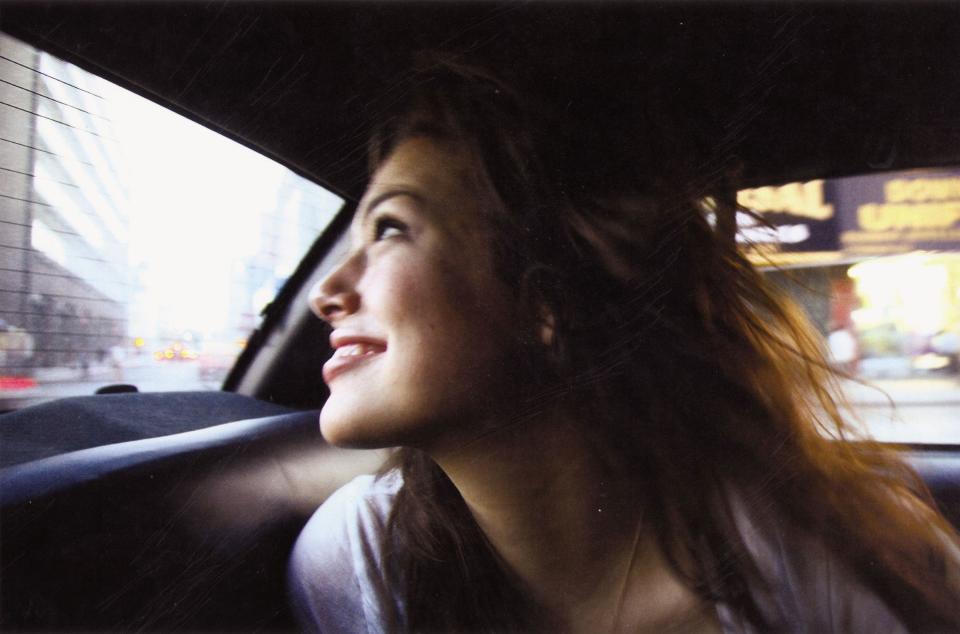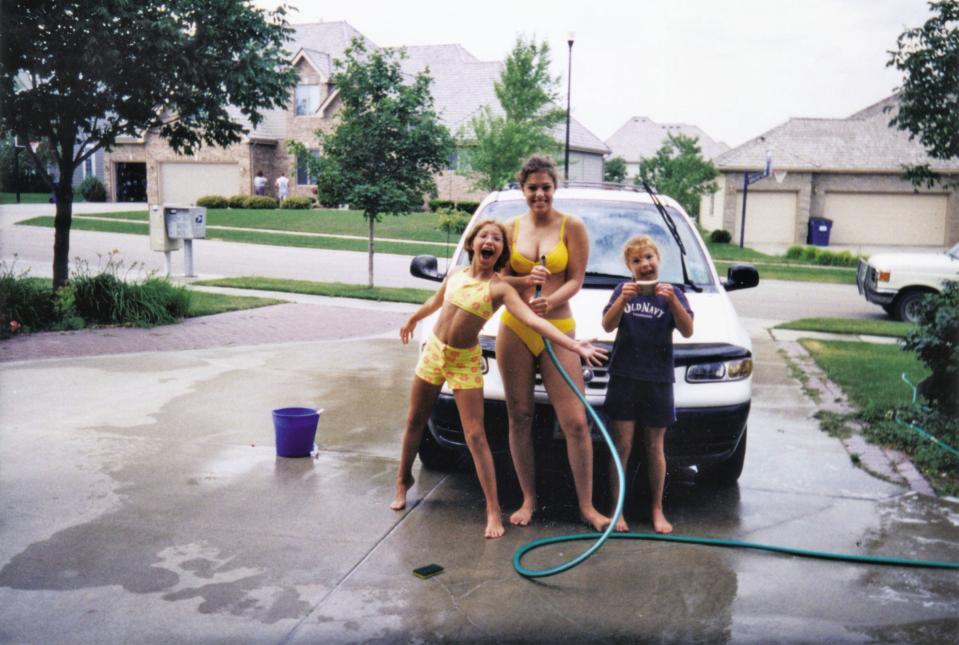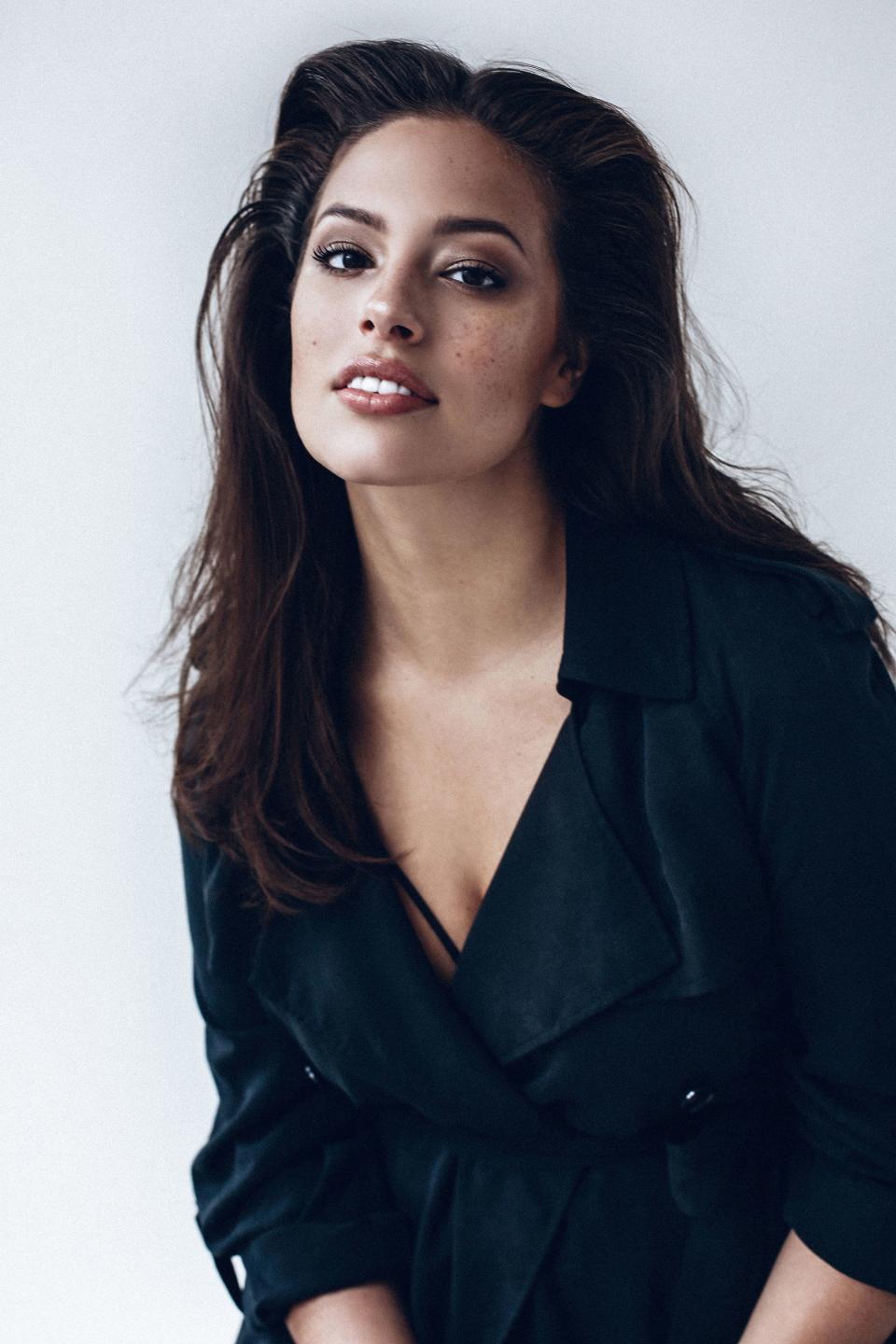Model Ashley Graham’s Honest New Book Chronicles the Making of a Body-Positive Icon
Photos: Getty; Courtesy.
Last night, Ashley Graham found herself getting unexpectedly emotional during a reading for her first book, A New Model, out today. The 29-year-old model and champion for body positivity had happened upon a passage in which she describes an unwanted advance at age 10. “When you read it out loud, it’s even more powerful to talk about being sexually assaulted because women just don’t do it,” she explains by phone following the event. “It’s not a natural conversation that you have with your girlfriends.”
For Graham, known for defiantly posting unretouched images that show off her celebrated curves as well as her cellulite, the unvarnished truth is equally important. After all, the highlight reel of her career is already known to many: her landmark cover of last year’s Sports Illustrated Swimsuit edition, a walk down the Fall 2017 Michael Kors runway, a spot as part of the diverse cast of models fronting the March issue of Vogue. What remained to be told, Graham reasoned, was the story behind the success story. Often charming and inspirational—she was scouted at a Nebraska shopping mall at 12 and landed a contract with Wilhelmina the following year—it isn’t always pretty. That’s exactly the point. She writes candidly about seeking validation by way of sex as a teenager, and the rejection that followed; later, as a young model in New York, she missed a flight for a job after a late night of partying. Her intent, as the book’s tagline states, is to show, foibles and all, “what confidence, beauty & power really look like.” And for Graham, that now means a flourishing business designing lingerie, dresses, and swimwear and a modeling career that shows no sign of slowing.
Fresh off a debut at the Met Gala (Graham’s custom-made dress came courtesy of H&M, which has cast her in recent campaigns), the model talked with Vogue about the responsibility that comes with leading the body-positive charge, the double standards in the industry (“plus-size models always get the same kind of makeup—safe,” she writes in the book), and why women need to band together, as she did in co-creating ALDA, a collective of fuller-figured models under IMG. “What I want is for fashion to just keep pushing the boundaries,” she says. “Then hopefully photographers and art directors and editors are going to be open to the idea of booking a curvy girl not because she’s curvy but because she’s going to be right for the story.”
You’ve said that at 18, when you almost abandoned modeling, your mother told you, “It doesn’t matter what you think about your body, because your body is supposed to change somebody’s life.” More than a decade later, do you think it has?
I definitely think that my body has changed many peoples’ lives. I’ve used my body as a tool to talk about taboo subjects, such as cellulite or being insecure about lower belly fat—and also [how to] talk life into your body and have an affirmation kind of conversation with yourself. And I know the lives that have been changed: young girls and even women my age who have written me and said, “I never loved the skin that I was in until I heard your journey.” I put photos of myself and my cellulite and my stretch marks online, and I don’t retouch them on purpose because my body is the average size of the American woman. It’s important to embrace who you are when you look in the mirror because, at the end of the day, it’s all you’ve got. So my mom was right.
In your book, you get quite personal with some troubling sexual experiences, including early abuse and a violent boyfriend. Why was it important to go there?
I think that the more vulnerable I was, the easier it was going to be for someone to relate to me. I’m not going to just give you the story half-assed—I’m going to give it to you full-on. For me, being pretty was wrapped up in sex. Being accepted was wrapped up in sex. I don’t want women to think like that. I want them to learn from my mistakes.
It’s too easy to define self-esteem in terms of others’ views. Are you starting to see yielding on that front?
I think there’s a huge yielding. I know women and young girls who never would have gotten in a bikini, a crop top, or even a body-con dress that are finally saying, “I look good in this. I’m happy enough to be in this.” That has been the last couple years—whether it’s wearing skimpier clothes or just walking down the street with more confidence because you actually like the way that you look, or because you are not listening to the people around you who have always told you negative [things]. I think now more than ever women are finally standing up and saying, "No—I like me for me."
Tell me about your affirmations.
I was raised super Christian, so words have power. You don’t speak bad things in your life. [But] for so long it was like, “You’re so fat, you’re so stupid, you can’t get that job.” I had to check myself—and it’s not easy. First, you write them down. Then the hard part is actually saying them in the mirror. When I came up with “I am bold, I am brilliant, I am beautiful,” I really liked how they were all three different. It was about my brains, it was about my beauty, and it was about being my true self, the boldness. The interior—that’s really where success comes from.
You’ve made a point to tether fitness to staying healthy—not to weight loss. What is your go-to workout?
I love Dogpound. The guys there are so good to me, and I love doing circuit training and weightlifting. And I really love boxing—I go to Gleason’s boxing gym with Don. Then I also have this other woman that I work with, [Morit [Summers]](https://www.moritsummerspersonaltraining.com/). She’s fantastic—a fellow curvy girl who just gets it. I’m the kind of person who needs someone telling me what to do, otherwise I go run on the treadmill for 10 minutes, and I’m like, "Whew, that was such a good workout!" I used to really be into rollerblading, and I just dusted off my rollerblades the other morning and went for a ride through Prospect Park. I think this summer I’m going to start rollerblading a lot more.
The term plus-size feels sort of leaden today, implying that curvier models are somehow abnormal. How do you propose the industry overhaul that label?
I just feel like, look, we’re here, and if you want to call us “plus-size,” fine, but I’m so over it. There are a lot of women who want to still be called that, and I get it; I also get going into a store and not knowing where your section is, and it all being jammed up by the 4s and the 6s. But I also feel like grouping women all together just because of a number inside of their pants is so divisive. Why do we have to do that? I think that this is the time and the place to really stand up for each other, to fight for each other—not to make it about one thing to divide [women], but to make [this moment] something that unites us.
This story originally appeared on Vogue.
More from Vogue:
See All The Celebrities On The Met Gala 2017 Red Carpet
13 of the Best-Selling Red Lipsticks of All Time
All of the Celebrity Looks from the 2016 Met Gala
The 27 Best Beach Bodies of All Time
The Best Celebrity Engagement Rings
The Best Hourglass Bodies of All Time: From Raquel Welch to Beyoncé



